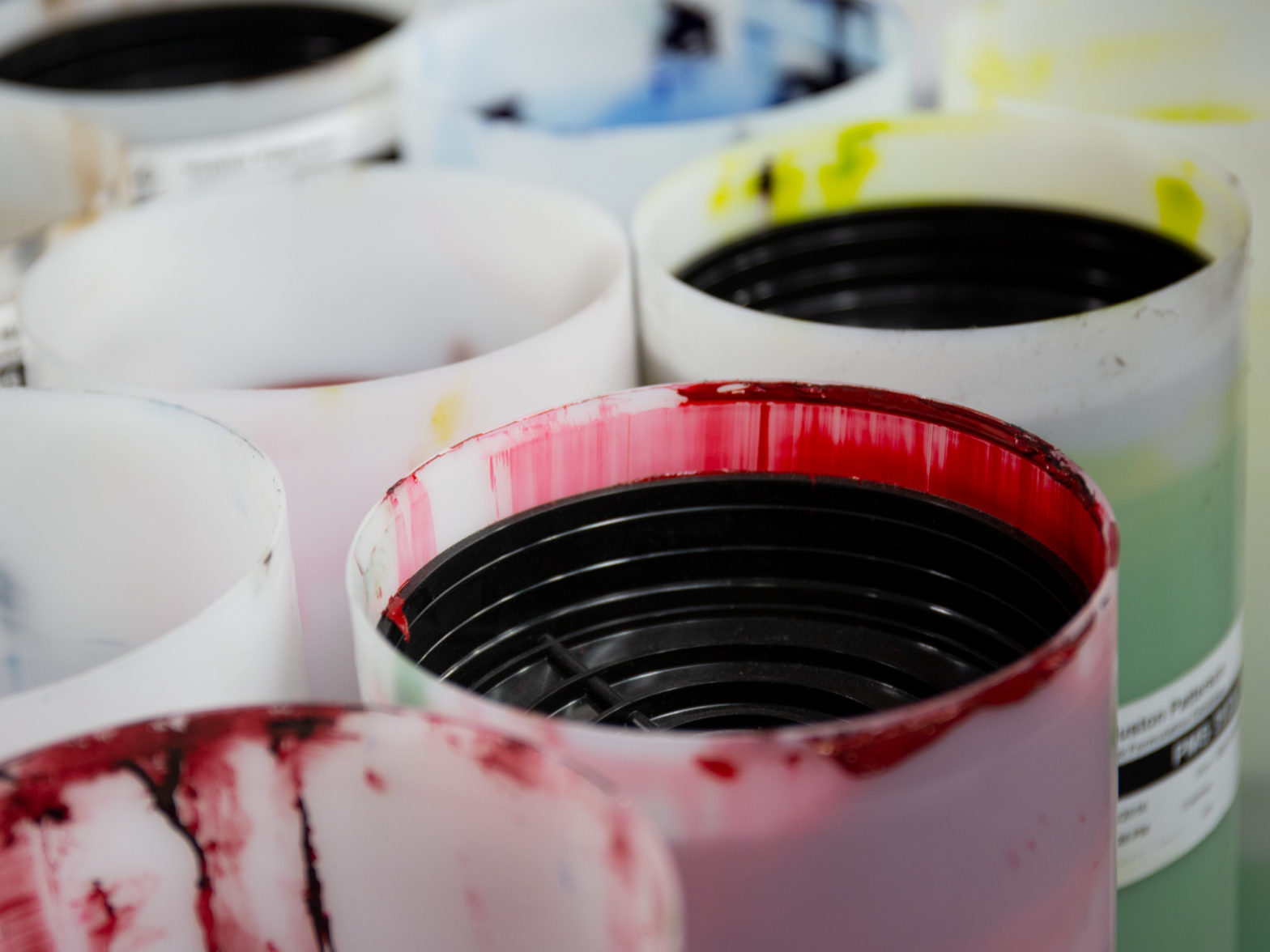As a printer in the packaging industry, we pride ourselves on consistently delivering high quality litho to our client’s. With any manufacturing business, the employees are running our machines and are in control of the process which can lead to human error. At Huston Patterson, we have quality controls in place to limit these instances and avoid inconsistent sheets leaving our plant. One of the processes in place is taking Delta e readings on the LAB’s for PMS colors. Many of our clients’ files will run as 4 color process inks (CMYK) but many will call out specific PMS or match colors.
Starting with CMYK, which stands for Cyan, Magenta, Yellow and Black. These are the primary colors for print and are used for the majority of the world’s printed material. There can be much variation in color with CYMK which is why Pantone created a system that allowed for consistent color. Below is an example of how the color green is created using CMYK.
PMS stands for Pantone Color Matching System, a proprietary color space used in a variety of industries, primarily printing. By standardizing the colors, different manufacturers in different locations can all refer to the Pantone system to make sure colors match without direct contact with one another. There is a special subset of Pantone colors that can be reproduced with running CYMK. Those that are possible to simulate through the CMYK process are labeled as such within the company’s guides.
However, most of the Pantone system’s spot colors cannot be simulated with CMYK but with 13 base pigments (14 including black) mixed in specified amounts. Pantone colors are described by their allocated number – typically referred to as, for example, PMS 3156. There are thousands of PMS colors within the Pantone system. Pantone provides a swatch book representing all the PMS colors available which allows end users and printers to speak the same language and communicate exact colors they want printed.
With each PMS color, there are lab values associated with it. L*a*b* color values give printer’s a way to locate and communicate colors. It is important to know what lab stands for… L* – lightness, a* – red/green value, b*: blue/yellow value. (see below)
Description
L* axis shows L=0
A* axis runs left to right
B* axis runs top to bottom
It is these Lab values assigned to specific colors that printers use as the standard when measuring the color on our sheets. These LAB values are read with a Spectrophotometer, which is used to measure the spectral values of each PMS color. These readings being taken by our Quality Department are referred too as delta e readings. Delta e is a single number that represents the distance between two colors. The lower the delta e, the closer it is to the standard with a higher delta e – the further it is from standard. A reading under 1 is not noticeable to the human eye with 1-2 readings can be preserved through close observation usually under a loupe.
When Huston Patterson is running PMS or match colors, we will take delta e readings during the press run on our pull sheets which is normally every 250-500. With all jobs, our standard is to keep our lab’s at or below 2.0. Pressman are constantly working to maintain the correct balance of color and these readings confirm where the lab’s and color is at. Maintain color consistency throughout a 10,000 sheet press run can be very challenging especially with the tight standards we hold ourselves accountable too.
With different lighting and multiple sets of eyes, the same color can vary greatly which is why delta e readings are so important throughout a press run. Even if two colors look the same to one person, slight differences may be found when evaluated with a color management instrument and if the printed sheet doesn’t match the approved sample or proof, customer approval and satisfaction is compromised.
If you are interested in learning more about these specialty coatings & finishes, please feel free to reach out to a Huston Patterson Client Service Manager, including myself – Kevin Collins.
For more tips from the Real People of HP, explore our additional blogs and videos, or contact us directly at Huston Patterson.

